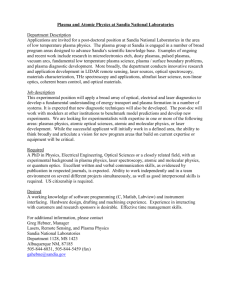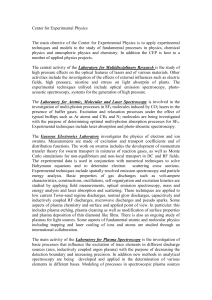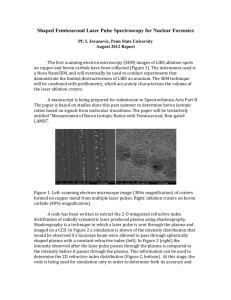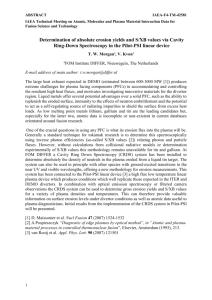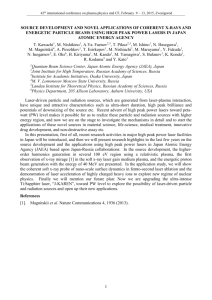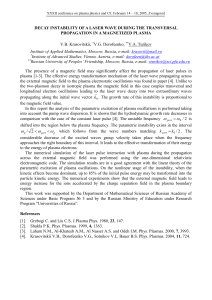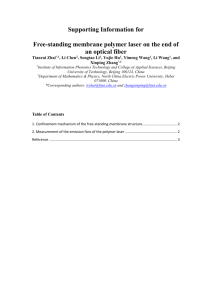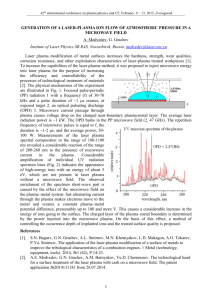Analysis of aqueous solutions I: Mixing & Dilution
advertisement
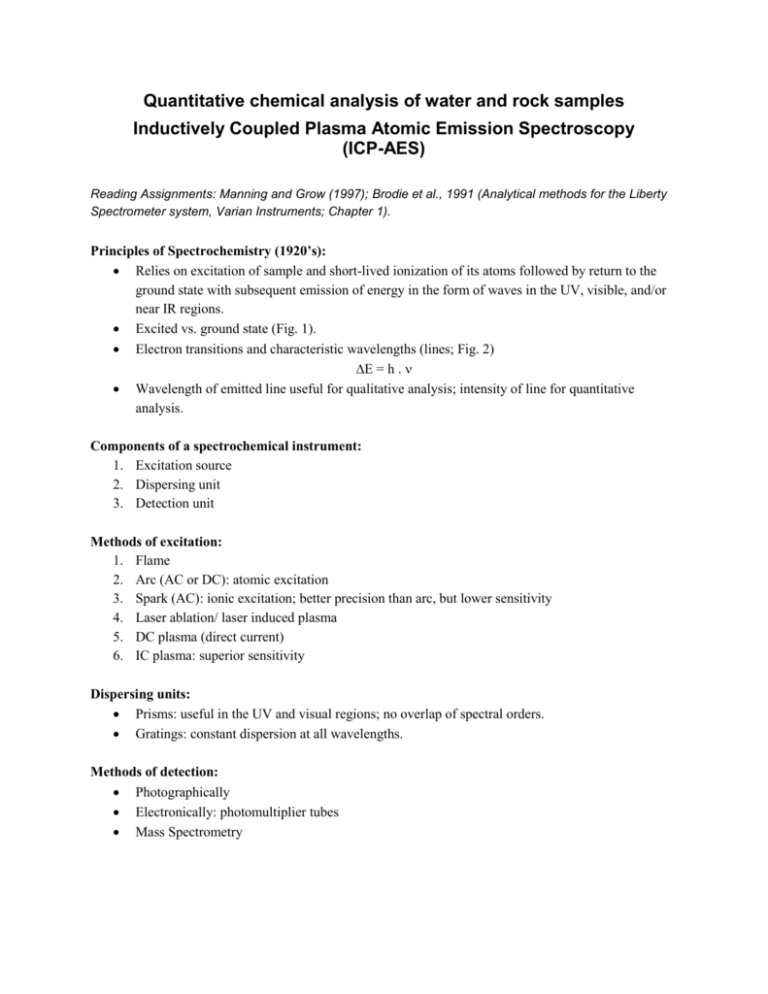
Quantitative chemical analysis of water and rock samples Inductively Coupled Plasma Atomic Emission Spectroscopy (ICP-AES) Reading Assignments: Manning and Grow (1997); Brodie et al., 1991 (Analytical methods for the Liberty Spectrometer system, Varian Instruments; Chapter 1). Principles of Spectrochemistry (1920’s): Relies on excitation of sample and short-lived ionization of its atoms followed by return to the ground state with subsequent emission of energy in the form of waves in the UV, visible, and/or near IR regions. Excited vs. ground state (Fig. 1). Electron transitions and characteristic wavelengths (lines; Fig. 2) E = h . Wavelength of emitted line useful for qualitative analysis; intensity of line for quantitative analysis. Components of a spectrochemical instrument: 1. Excitation source 2. Dispersing unit 3. Detection unit Methods of excitation: 1. Flame 2. Arc (AC or DC): atomic excitation 3. Spark (AC): ionic excitation; better precision than arc, but lower sensitivity 4. Laser ablation/ laser induced plasma 5. DC plasma (direct current) 6. IC plasma: superior sensitivity Dispersing units: Prisms: useful in the UV and visual regions; no overlap of spectral orders. Gratings: constant dispersion at all wavelengths. Methods of detection: Photographically Electronically: photomultiplier tubes Mass Spectrometry Types of Spectrochemical Instruments 1- Flame photometer 2- DCP-AES 3- MIP-AES (microwave induced plasma atomic emission spectrometer) 4- ICP-AES 5- AAS: several methods including GF-AAS 6- ICP-MS 7- LA-ICP-MS (Laser ablation ICP mass spectrometer). Comparison of the Different techniques of spectrochemistry commonly used in geochemical analysis: Uses, limitations, and detection limits (Table 1). Inductively Coupled Plasma Atomic Emission Spectroscopy: Definition of “Plasma”: A partially ionized gas in which some electrons are free. Overall, it has a neutral charge, is electrically conductive, and responds to electromagnetic fields. Characterized by T of 1000’s of degrees Celsius. Components of an ICP-AES (Fig. 3) Nebulizer (Fig. 4) Torch and radiofrequency source (Fig. 5). Note the different zones within the flame. Two methods of mounting (orientation): Vertical (Radial): better for organics, better linearity. Horizontal (Axial): offers greater sensitivity, lower maintenance costs. Detectors: Simultaneous: measure specific s at multiple (fixed!) positions simultaneously polychromator Sequential: uses gratings monochromator (time consuming, but more flexible!) Precautions for quantitative analysis Standard selection Concentration ranges for standards Interferences: o Spectral o Background o Matrix effects o Ionization Detection Limits Precision and Accuracy of the technique: Laser Techniques (Fig. 6): CO2 laser sputters or “ablates” solid samples.
